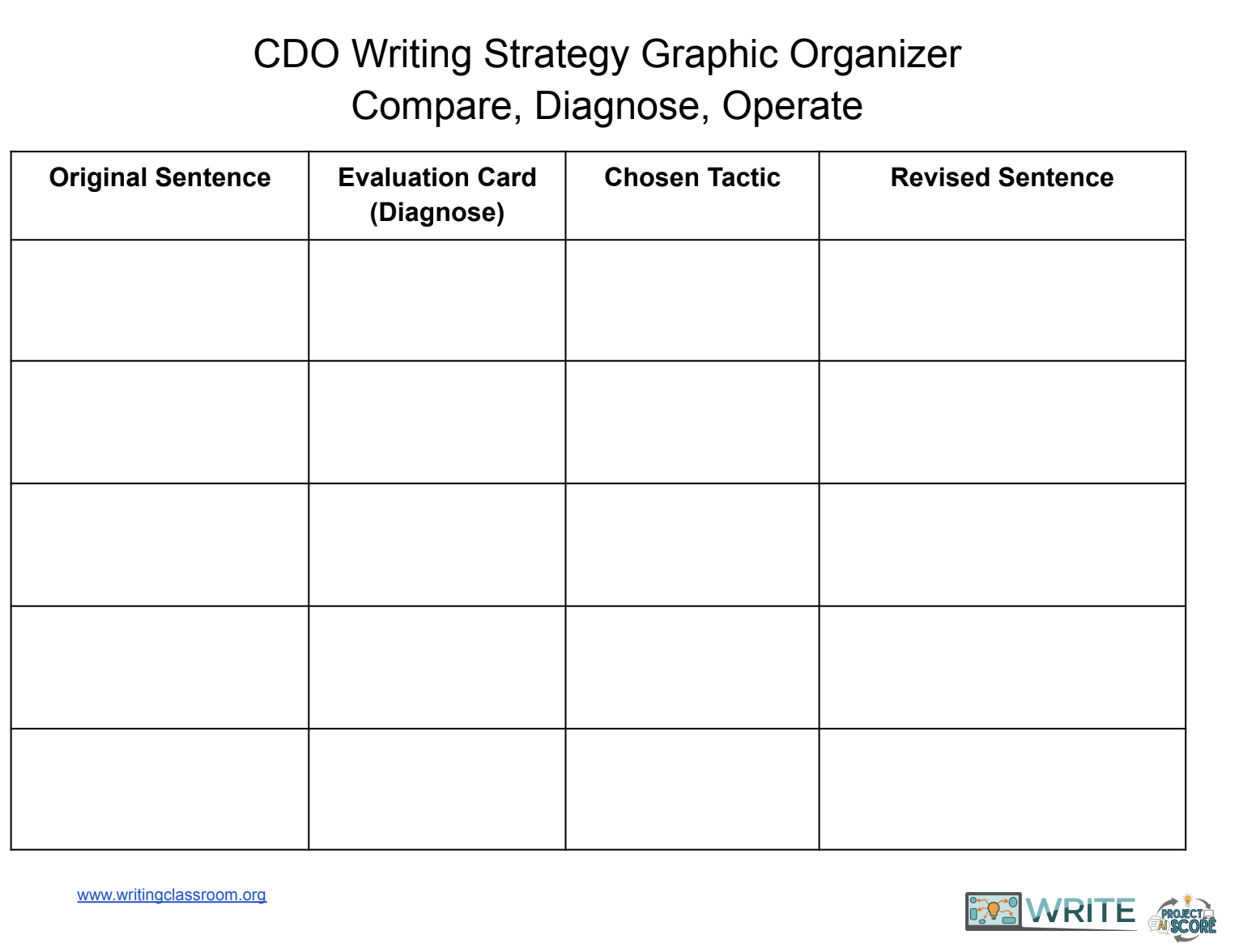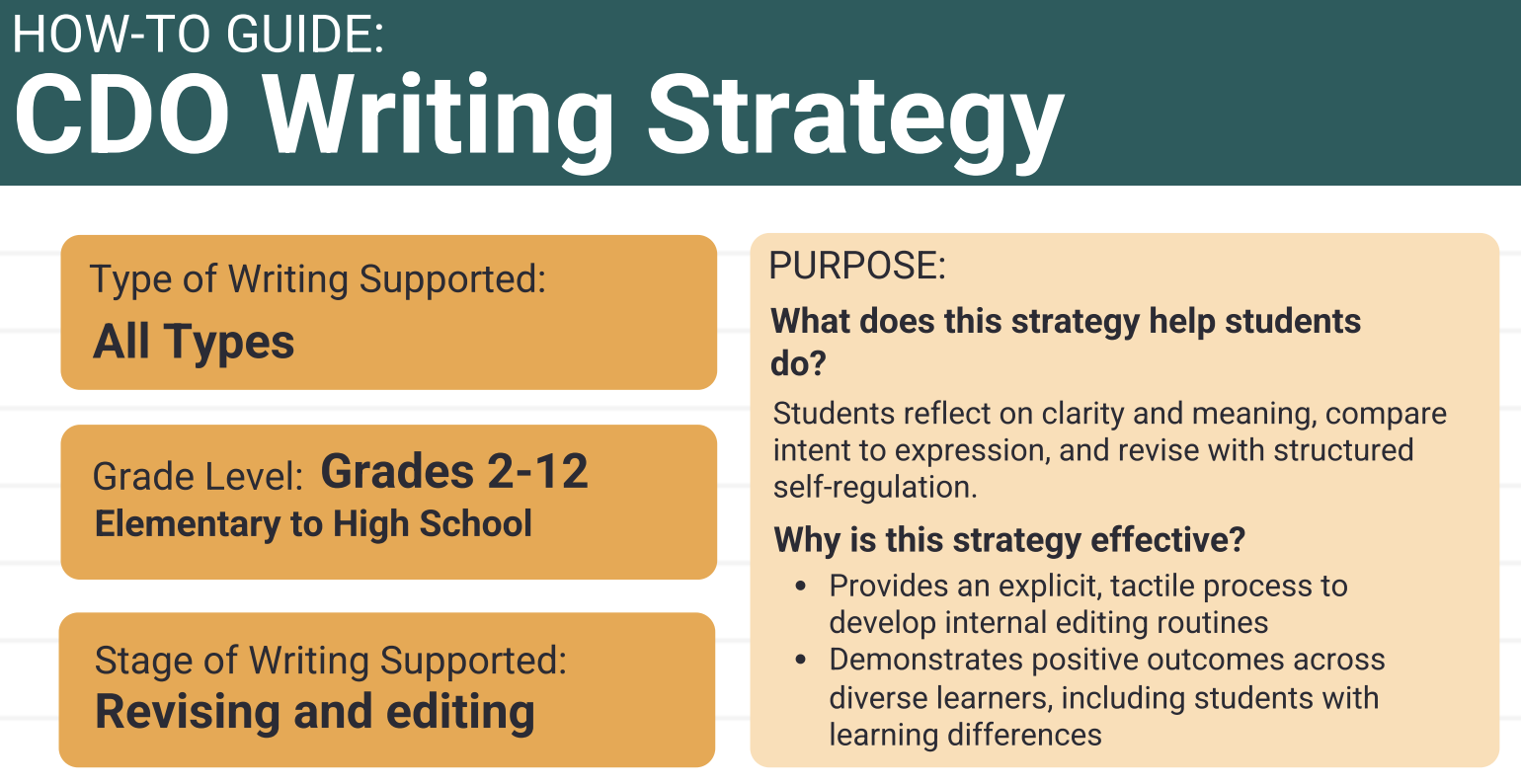Compare, Diagnose, Operate (CDO) Strategy
Strategy Parameters
-
Genre: Persuasive, narrative, informational.
-
Grade Level: Grades 2–12 (most common in 4th–8th grade studies).
-
Writing Process: Revising and editing.
At-A-Glance
CDO (Compare, Diagnose, Operate) is a self-regulation strategy that guides students to actively revise their writing by evaluating it against their original intent and audience. The process encourages metacognitive awareness, helping students identify the gap between what they meant to say and what is on the page. It breaks revision into concrete, repeatable steps, which is especially effective for building internal editing habits and supporting learners with learning differences.
Learn More
Best Practices
-
Explicitly teach and model each CDO step using think-alouds to demonstrate the internal thought process (e.g., demonstrating “Compare” out loud).
-
Use CDO-specific tools like evaluation cards for Diagnose, anchor charts for all three steps, and the revision checklist for Operate to scaffold practice.
-
Encourage reflection on intention and audience during the Compare step to ensure the writing matches the goal.
-
Build in structured peer review using CDO so partners can practice selecting evaluation cards and suggesting Operate strategies together.
-
Embed CDO as a routine part of revision in multiple writing assignments rather than treating it as a one-time activity.
Common Pitfalls
-
Don’t skip modeling CDO with real sentences; students must see the three steps in action before they can apply them independently.
-
Don’t rush through the explicit instruction phase; each step (Compare, Diagnose, Operate) needs clear explanation, practice, and guided feedback.
-
Don’t overload students with unrelated strategies while teaching CDO; focus on mastering the Compare, Diagnose, and Operate cycle before layering on new approaches.
-
Don’t treat the strategy as a simple checklist; emphasize the metacognitive aspect of comparing intention with the written text.
-
Don’t forget to teach the phases of SRSD (Self-Regulated Strategy Development), which underpins CDO and emphasizes self-monitoring and gradual release of responsibility.
Implementation Tips
-
Introduce and Model SRSD and CDO: Begin by teaching the phases of SRSD to establish the importance of self-monitoring and then model each CDO step clearly with a think-aloud using real sentences. Use a structured presentation with anchor charts or evaluation cards and integrate check-points to confirm a solid grasp of the strategy.
-
Scaffolding through Group Practice: Use group settings for initial practice, where students participate in peer review cycles using CDO evaluation cards and revision graphic organizers. This collaborative work guides them to diagnose specific issues in sentences and suggest appropriate operations for fixing them.
-
Independent and Hybrid Practice: Assign short, independent daily tasks, such as revising a single sentence, which can be used as warm-ups or exit tickets to build internal editing habits. Use a hybrid approach by starting with teacher-led modeling, moving to student pair practice, then individual revision, and concluding with peer checks to fully internalize the process.




